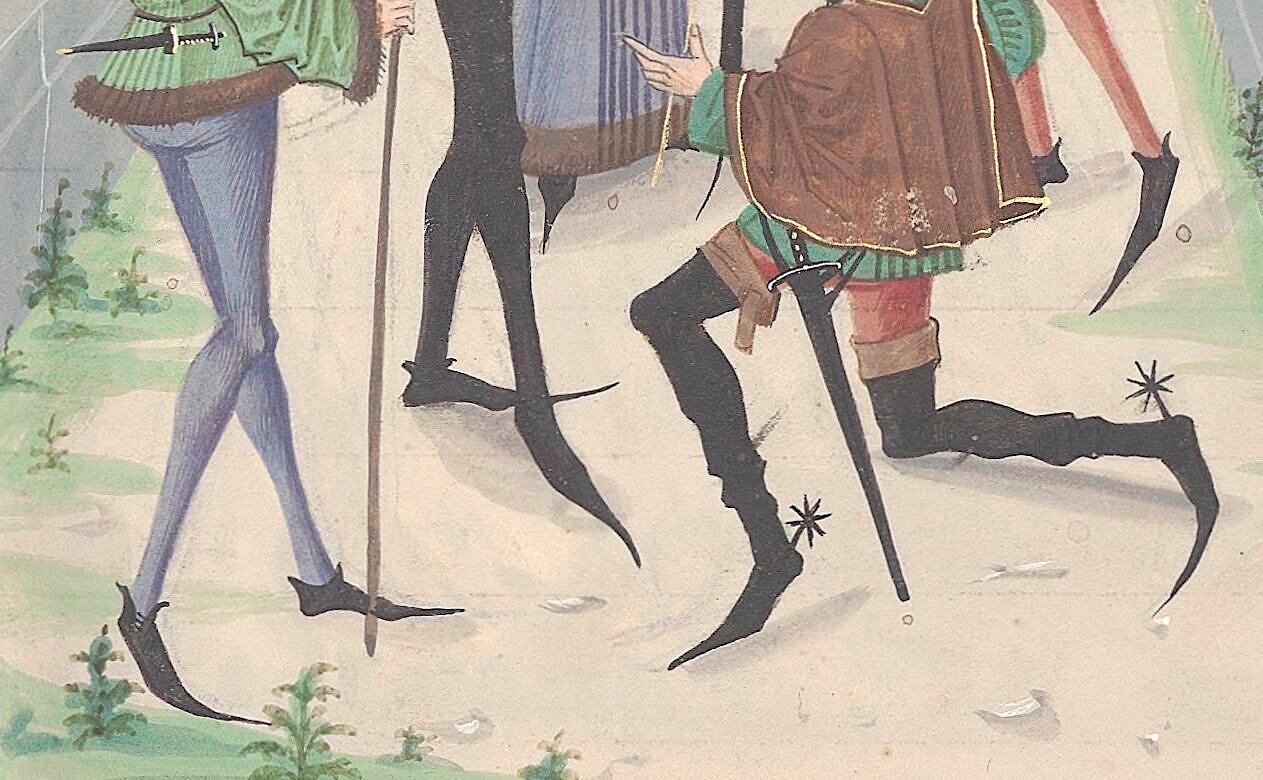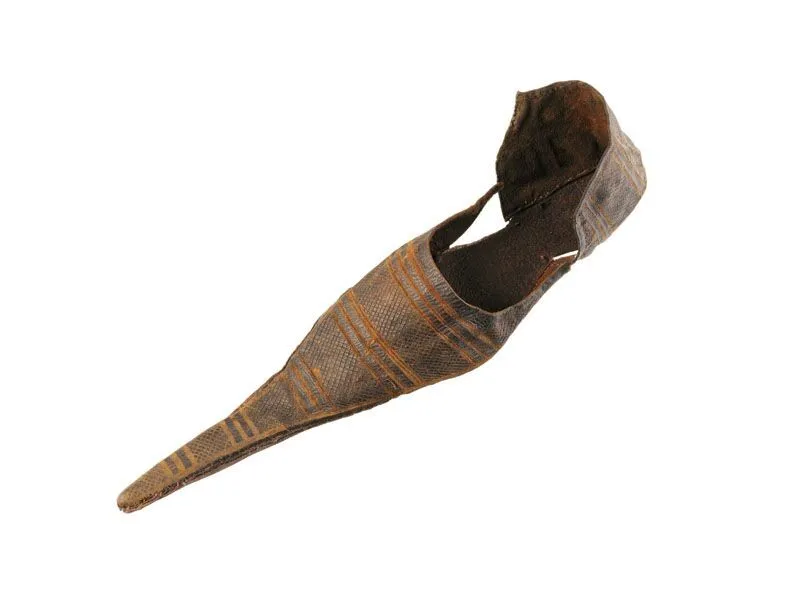
We will all remember seeing pictures of medieval Europeans put oning pointy footwear, however most of us have paid scant attention to the footwear themselves. Which may be for the very best, for the reason that extra we dwell on one truth of life within the Middle Ages or another, the extra we imagine how uncomfortin a position and even painful it should have been by our standards. Dentistry could be essentially the most vivid examinationple, however even that fashionin a position, imprecisely elfin footwear inflicted suffering, especially on the peak of its popularity — not least amongst flashy younger males — within the 4teenth and fifteenth centuries.
Known as poulaines, a reputation drawn from the French phrase for Poland in reference to the footwear’s supposedly Polish origin, these pointy footwear appeared across the time of Richard II’s marriage to Anne of Bohemia in 1382. “Each women and men wore them, though the aristocratic males’s footwear have a tendencyed to have the longest toes, someoccasions so long as 5 inches,” writes Ars Technica’s Jennifer Ouellette. “The toes had been typically full of moss, wool, or horsehair to assist them maintain their form.” For those who’ve ever watched the primary Blackadvertder sequence, know that the footwear worn by Rowan Atkinson’s hapmuch less plotting prince could also be comic, however they’re not an exaggeration.

Regardmuch less, he was a bit behind the occasions, given that the present was set in 1485, proper when poulaines went out of fashion. However they’d already carried out their damage, as evidenced by a 2021 research hyperlinking their put oning to nasty foot disorders. “Bunions — or hallux valgus — are bulges that seem on the aspect of the foot as the massive toe leans in in direction of the other toes and the primary metatarsal bone factors outwards,” writes the Guardian’s Nicola Davis. A workforce of University of Cambridge researchers discovered indicators of them being extra prevalent within the stays of individuals buried within the 4teenth and fifteenth centuries than these buried from the eleventh by way of the thirteenth centuries.
But bunions had been exhaustingly the evil towards which the poulaine’s contemporary critics inveighed. After the Nice Pestilence of 1348, says the London Museum, “clerics claimed the plague was despatched by God to punish Londoners for his or her sins, especially intercourseual sins.” The footwear’ lascivious associations continued to attract ire: “In 1362, Pope City V handed an edict banning them, however it didn’t actually cease anyphysique from put oning them.” Then got here sumptuary legal guidelines, according to which “commoners had been charged to put on quicker poulaines than barons and knights.” The power of the state could also be as nothing towards that of the fashion cycle, however had there been a legislation towards the bluntly square-toed footwear in vogue after I was in highschool, I can’t say I’d’ve objected.
Related content:
Elegant 2,000-Yr-Outdated Roman Shoe Present in a Properly
Exquisite 2300-Yr-Outdated Scythian Girl’s Boot Preserved within the Frozen Floor of Siberia
Doc Martens Boots Adorned with Hieronymus Bosch’s “Garden of Earthly Delights”
How you can Get Dressed & Combat in 14th Century Armor: A Reenactment
Primarily based in Seoul, Colin Marshall writes and broadcasts on cities, language, and culture. His initiatives embody the Substack newsletter Books on Cities and the guide The Statemuch less Metropolis: a Stroll by way of Twenty first-Century Los Angeles. Follow him on the social webwork formerly referred to as Twitter at @colinmarshall.
